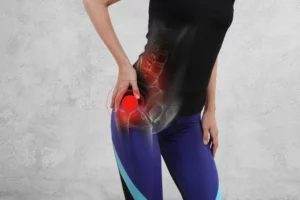No pain no gain in Massage – Truth or Myth?
There is the common perception that Remedial and Deep Tissue Massage needs to hurt to be of benefit. However, gone are the days of the football locker room where you could pummel a corkie and think that was good for the body. The Massage industry has changed and continues to evolve as there is now a far greater understanding of the body and how the muscles and fascia work together. The way massage is taught has changed as new research shows the benefits of not adhering to the old saying of “no pain no gain” and part of the massage industries role is to re-educate the public as to the benefits of massage without pain. In this article we will explore why this is and the benefits that come from pain free massage.
The word “remedial” means “to apply remedy”. Therefore Remedial Massage is about supporting the body to heal from an injury, tension or pain. Our aim as Massage Therapists when working with the musculoskeletal system is to relax and release tightly held muscles that may have a build-up of toxins from an injury, from overuse of muscles, stress or from incorrect posture etc. When muscles are held in tension our aim is to release and relax these muscles, not cause further tightness or tension.
Therefore, what is important when performing a massage is for the client to be able to fully relax in order to support the muscles to release. If the client is tense and bracing (which often comes when they are feeling pain) then it is difficult for the muscles that you are working on to fully let go.
Pain is the body’s feedback mechanism to say stop what you are doing. When pain is felt the body responds by causing the muscles to harden up around the injured site for protection to avoid further injury. Which of course is the opposite to what we are looking to achieve in the first place.
What can also be useful here is to have an understanding that the role the connective tissue plays within the body. Connective tissue isa system of tissues that runs throughout all the muscles, tendons, ligaments, bones, nerves, blood vessels and organ overlapping and enveloping soft tissue structures like cling film.
The fluidity and moistness of the connective tissue allows for friction free movements and supports all our body’s systems from the inside out. Energy flows through our connective tissue and in its ideal state, the connective tissue supports our natural elongated posture and our organ systems to work together harmoniously. We can picture our connective tissue like a river that flows throughout our entire body.
When pain is induced, the connective tissue (fascia) also hardens up to go into its protective state. So we can see that force or pain inflicted causes not only the muscles to tighten up but also has an impact on the connective tissue and therefore an overall effect of creating more tension in the body. Again, this is the opposite to what we are looking to achieve which is to relax and release the body.
To make this practical to massage, I would like to use an example and discuss how this can be applied to Trigger Point therapy, a common technique used in Remedial Massage. A trigger point is an area in the muscle (usually in the belly of the muscle or at the origin or insertion of the muscles) that has a build-up of toxins. The client often feels a bit of pain when pressing on what is referred to as an active trigger point.
Rather than forcefully working into a trigger point where the body might tense up, it is possible to release the trigger points gently and access the deeper tissue and muscles in the body. We can do this through the use of lots of repetitive effleurage strokes to first of all warm up the outer layer of muscle, this then allows you to naturally and easily access the next and deeper level of muscles (hence the name deep tissue). If you try to access the deeper muscles via force and without truly understanding the role of the connective tissue in the body, the outer muscles harden and go into protection going against what we are trying to achieve, which is to relax them.
Once the outer muscles have been warmed up, then we can access the deeper tissue in a gentle manner, with no force and without inflicting pain. The trigger point is able to release gently and the rest of the body hasn’t gone into protection. We have therefore released the point of tension as well as keeping the surrounding muscles and tissues relaxed. Goal achieved – with no pain inflicted.
Donna Nolan works as a Remedial Massage Therapist at Total Physio Manly Vale and teaches the Diploma of Remedial Massage at Australia’s largest and most reputable massage school, Evolve College.


